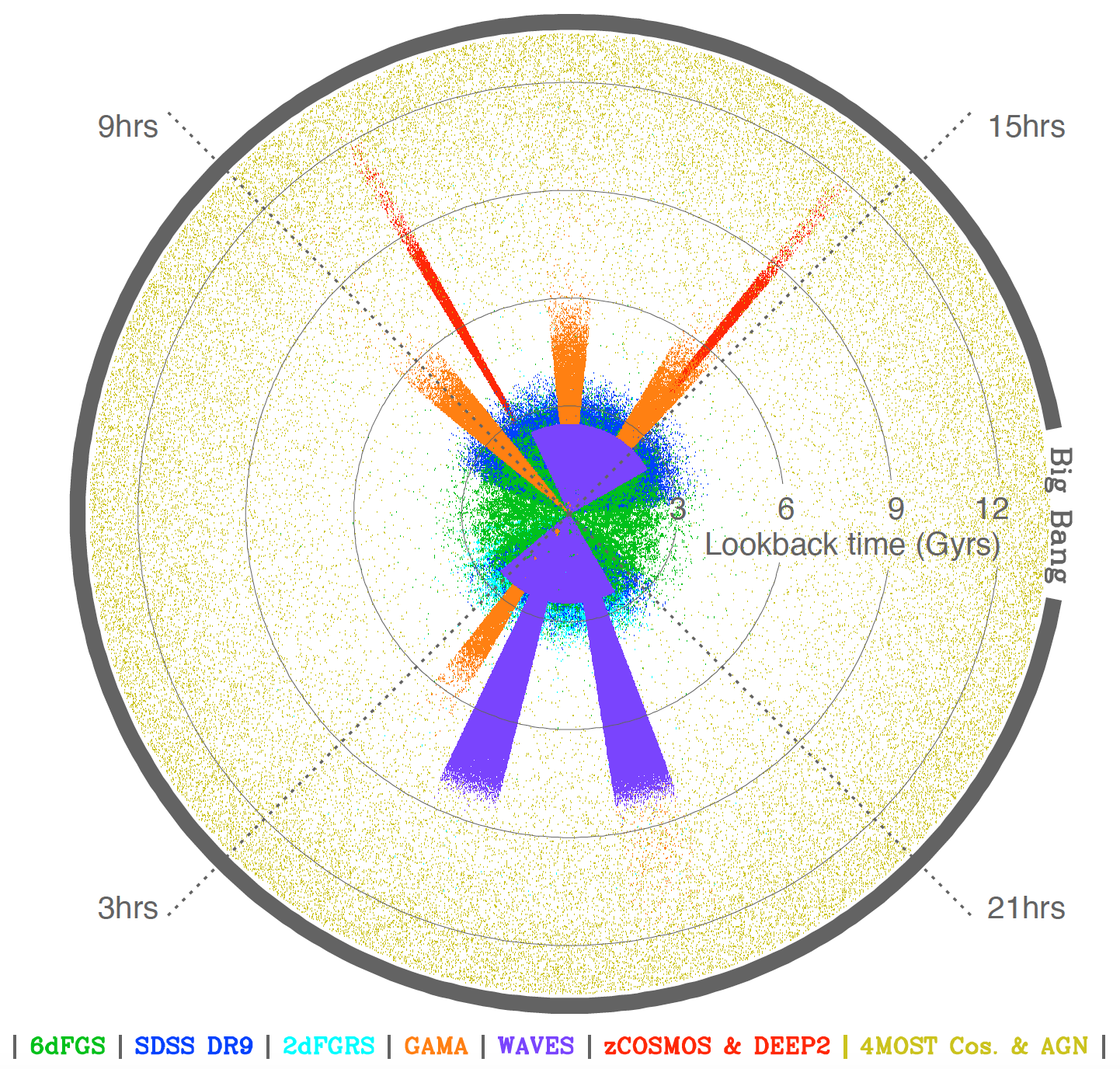WAVES: A dark matter experiment
by Anna Arnadottir on 2016-11-29
For the majority of time (10 of 13.8 Gyrs) dark matter has been the dominant influence in our Universe, driving both the decelerating expansion over the first 10 billion years, as well as clumping and coalescing under gravitational attraction into the super-clusters, filaments, and halos that make up the cosmic web. As the dark matter clumps, the baryons are drawn in, leading to self-gravitating baryonic structures in which star-formation, nucleosynthesis beyond Helium, and complex structures such as you and I emerge. Dark matter is arguably the most critical component of our Universe, and certainly played the most important role in shaping its large-scale structure today. Direct searches for dark matter have thus far failed to identify the underlying particle(s), and so we continue to study it indirectly via its gravitational interaction with normal matter, and through the bending of light around mass concentrations. From a cosmological perspective we have several ways of quantifying the total amount of dark matter, in particular: SNIa (one Nobel prize), the CMB (two Nobel prizes), massive cluster dynamics, weak lensing, and redshift space distortions. These quantify the total amount of dark matter, and contain statistical information as to its spatial distribution and halo mass distribution, but do not trace all of the individual concentrations themselves.
Numerical simulations suggest the dark matter mass distribution follows a simple power law with the majority of mass clumped in halos comparable in mass to the local Milky Way group, i.e., ~10^12 Msol. The only method that allows us to trace the dark matter condensates directly to this mass resolution is group finding. Here we rely on the random motions of the bound galaxies to relay the underlying halo mass and profile shape. To do this well requires a very specific survey design; one which is extensive in area yet fully sampled and highly complete, and with a velocity precision of ~30km/s. 4MOST is the only facility capable of delivering on this with its high multiplexing capability, coupled to its broad field of view, R>2500 resolution, and dedicated operational mode.

WAVES will allow us to identify 50,000 dark matter halos from very high cluster masses to local group scales in the nearby Universe, and a further 50,000 halos out to a time when the Universe was half its current age. These data will be used to study dark matter and its recent growth, as well as its influence on the galaxy formation process.
For the former we will precisely reconstruct the dark matter distribution within a ~Gpc^3 volume as well as its evolution over an 8 billion year timeline. For the latter we will study the properties of the galaxies, stars, dust and gas within these halos over the same timeline. Even more ambitiously the survey even has the potential to place meaningful constraints on the dark matter particle mass via: the incidence of pairs, the stacked halo profile shapes, and void sizes, all of which require bespoke simulations now underway at UWA. It is clear that deviations from our concordance cold dark matter model, if they exist, are best probed at the smallest (i.e. group) scales since this is where discrepancies between “warm" and “cold” power-spectra in the initial conditions of the Universe will lie.
The figure shows notable surveys from which group catalogues have been constructed with 100s to 1000s of halos. WAVES will be a ten-fold game-changer and the most extensive dark matter study for the foreseeable future. The mauve regions denote the photo-z selected WAVES-Wide regions, along with the two WAVES-Deep fields. Within these zones all dark matter condensates down to local group halos masses will be known.